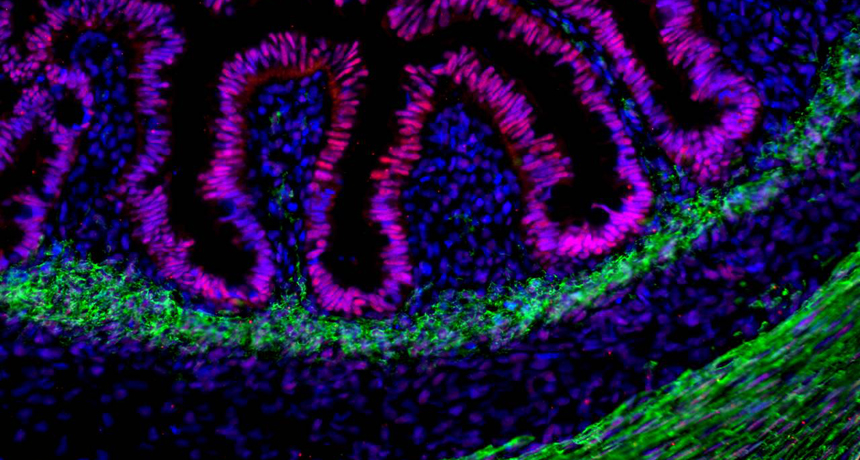Tiny human intestine grown inside mouse
Gut tissue in rodents could test patient-specific disease treatments

LOOKS LIKE A GUT Transplanted into mice, tiny specks of human intestinal tissue (stained pink) develop into working organs surrounded by a muscular sheath (stained green), just like real intestines.
Helmrath lab